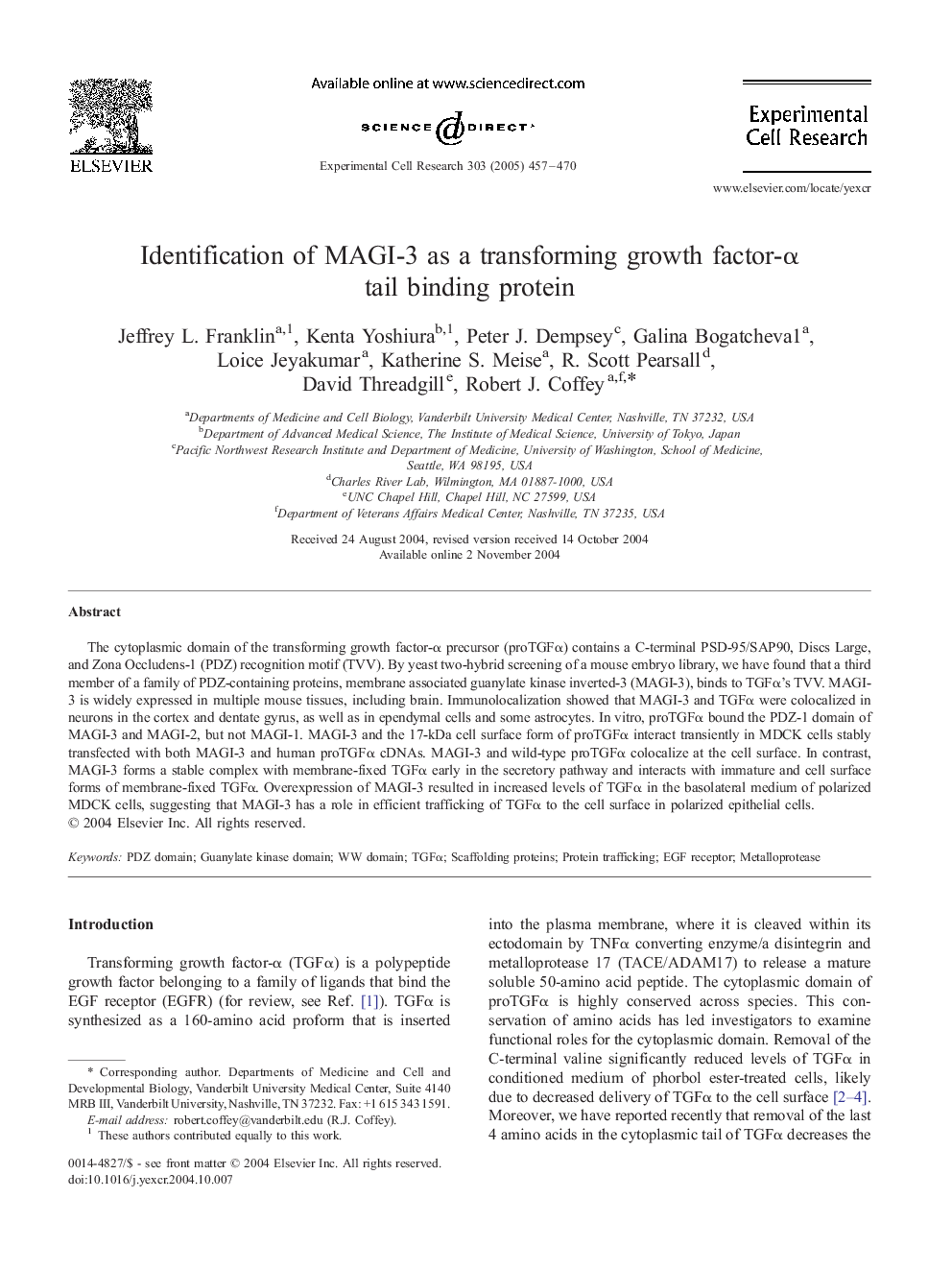| Article ID | Journal | Published Year | Pages | File Type |
|---|---|---|---|---|
| 10905772 | Experimental Cell Research | 2005 | 14 Pages |
Abstract
The cytoplasmic domain of the transforming growth factor-α precursor (proTGFα) contains a C-terminal PSD-95/SAP90, Discs Large, and Zona Occludens-1 (PDZ) recognition motif (TVV). By yeast two-hybrid screening of a mouse embryo library, we have found that a third member of a family of PDZ-containing proteins, membrane associated guanylate kinase inverted-3 (MAGI-3), binds to TGFα's TVV. MAGI-3 is widely expressed in multiple mouse tissues, including brain. Immunolocalization showed that MAGI-3 and TGFα were colocalized in neurons in the cortex and dentate gyrus, as well as in ependymal cells and some astrocytes. In vitro, proTGFα bound the PDZ-1 domain of MAGI-3 and MAGI-2, but not MAGI-1. MAGI-3 and the 17-kDa cell surface form of proTGFα interact transiently in MDCK cells stably transfected with both MAGI-3 and human proTGFα cDNAs. MAGI-3 and wild-type proTGFα colocalize at the cell surface. In contrast, MAGI-3 forms a stable complex with membrane-fixed TGFα early in the secretory pathway and interacts with immature and cell surface forms of membrane-fixed TGFα. Overexpression of MAGI-3 resulted in increased levels of TGFα in the basolateral medium of polarized MDCK cells, suggesting that MAGI-3 has a role in efficient trafficking of TGFα to the cell surface in polarized epithelial cells.
Related Topics
Life Sciences
Biochemistry, Genetics and Molecular Biology
Cancer Research
Authors
Jeffrey L. Franklin, Kenta Yoshiura, Peter J. Dempsey, Galina Bogatcheval, Loice Jeyakumar, Katherine S. Meise, R. Scott Pearsall, David Threadgill, Robert J. Coffey,
